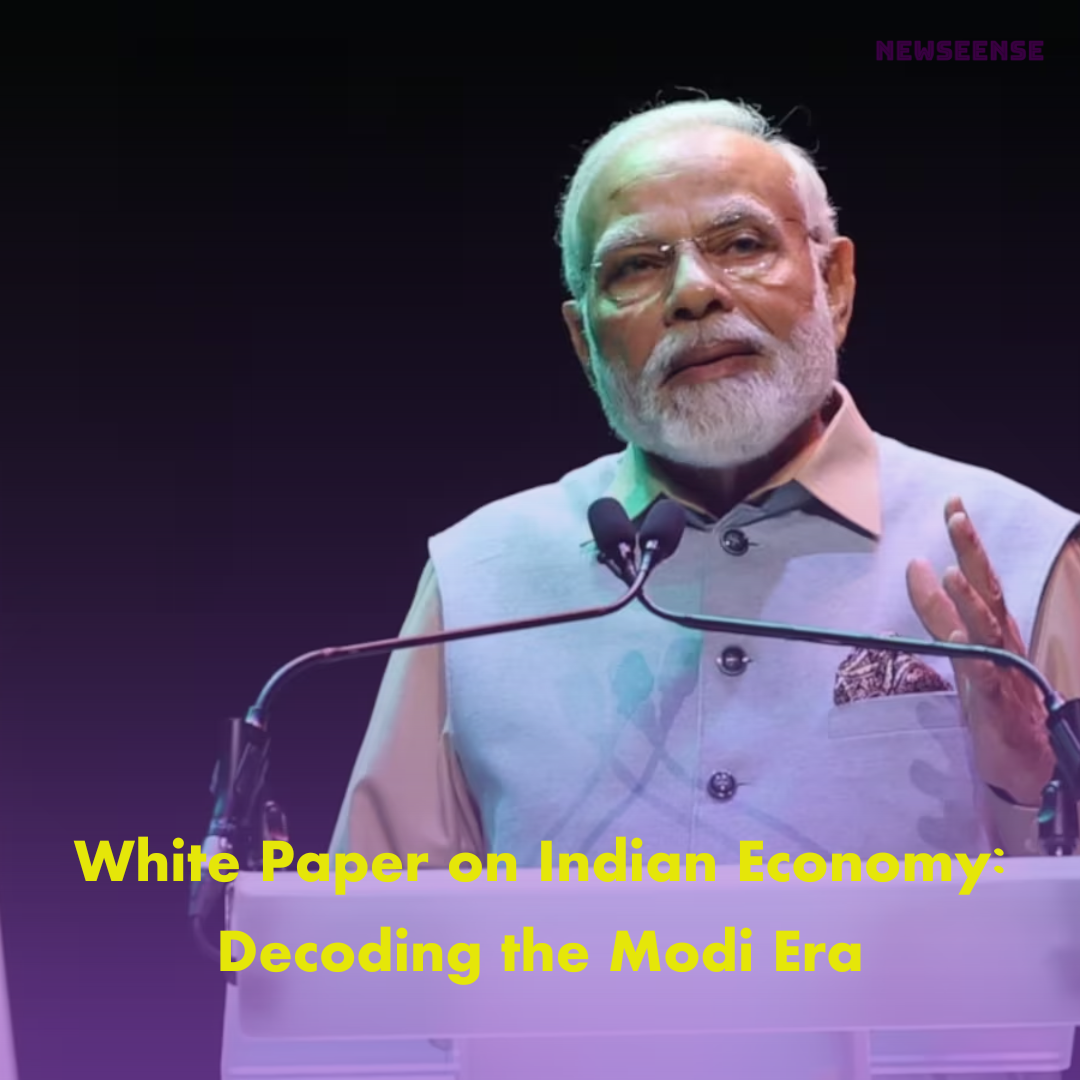
In a decisive move, the Narendra Modi government presented the ‘White Paper on the Indian Economy’ in Parliament, offering a comprehensive insight into the fiscal landscape and drawing stark comparisons with the preceding UPA regime led by economist-turned-Prime Minister Manmohan Singh. The document, while shedding light on the achievements of the Modi government, also serves as a potent critique of the past decade, highlighting fiscal mismanagement and corruption during the UPA’s tenure.

The White Paper meticulously contrasts the economic trajectories of the two periods, showcasing India’s evolution from a ‘fragile five’ economy to the world’s fifth-largest economy under Modi’s governance. It underscores the impact of global disruptions, especially the Covid-19 pandemic, which may have delayed achieving this milestone sooner.
The timing of the paper, coinciding with Manmohan Singh’s farewell from Rajya Sabha, adds weight to the BJP’s argument for a single center of power, contrasting with the dual power centers observed during the UPA regime, where political clout was concentrated in UPA Chairperson Sonia Gandhi.
Delving into the challenges faced by a minority government during the UPA era, the White Paper emphasizes the need for a strong majority government, suggesting that alliances with regional parties may impede economic and administrative progress. The multiple scams and fiscal profligacy are attributed to political interference, prioritizing government survival over economic advancement.
While presenting authentic facts, the ‘White Paper’ carries a political undertone, evident in its release on the eve of the 2024 General Elections. It positions the BJP as the bearer of ‘Modinomics,’ promising a developed India by 2047, and puts the Congress and UPA allies on the defensive, compelling them to address questions about economic mismanagement and corruption during the upcoming campaign.
As the Opposition scrambles for ammunition against the Modi government, the document challenges them to present an alternative vision to attract voters. The narrative suggests that traditional strategies of dividing voters based on religion, caste, and economic disparity may not yield the same electoral dividends, as people increasingly believe in the potential of Bharat achieving a powerful India.
Reflecting on the past decade, the ‘White Paper’ applauds Prime Minister Narendra Modi for revitalizing India’s civilizational past and propelling the economy on a rapid growth trajectory. The document credits the government for decisive actions on internal and external security issues, such as the abrogation of Article 370 in Kashmir and confronting challenges from the Chinese Communist regime.
More than a historical record, the White Paper embodies the Modi government’s resilience, ambition, and intolerance to corruption. It serves as a blueprint for future governments, cautioning against political interference without accountability and advocating for strong political leadership, not just economists, to steer India towards progress.
- BJP President JP Nadda Issues Notice to Dilip Ghosh Over Controversial Remarks on Mamata Banerjee
- Ram Charan and Kiara Advani’s ‘Jaragandi’ Song from Game Changer Released
- Pre-Match Banter: Rohit Sharma’s Flying Kiss Recreation Adds Spice to MI vs SRH Clash
- Swami Smaranananda Maharaj, President of Ramakrishna Math and Ramakrishna Mission, Passes Away at 95
- Stand-up Comedian Munawar Faruqui Breaks Silence on Social Media After Mumbai Police Detention